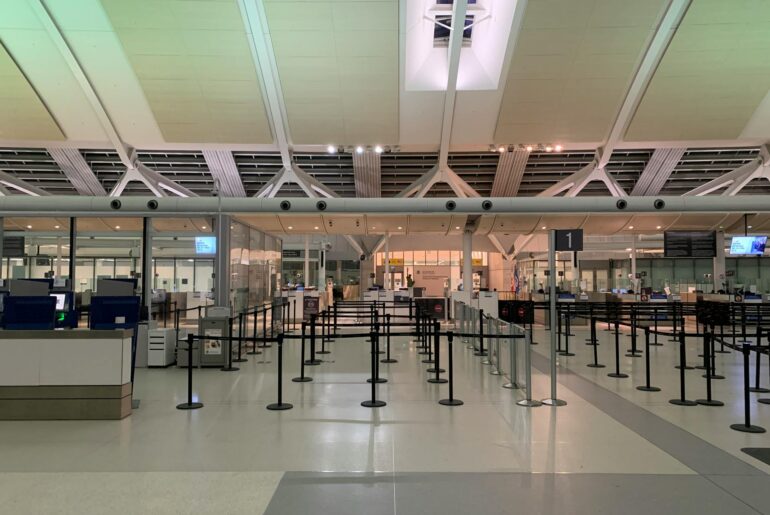This article may contain references to products or services from one or more of our advertisers or partners. We may receive compensation when you click on links to those products or services. Nonetheless, our opinions are our own.
The information presented in this article is accurate to the best of our knowledge at the time of publication. However, information is subject to change, and no guarantees are made about the continued accuracy or completeness of this content after its publication date.
- How Airlines Restructure Debt and Move Toward Recovery
- Market Pressures and the Path to Bankruptcy
- The Restructuring Process: Realignment Over Liquidation
- Financial Strategies Airlines Use to Recover
- Passenger-Facing Impacts During Restructuring
- Lessons in Financial Resilience from the Airline Sector
- Monitoring the Recovery of Airlines Post-Bankruptcy
- Common Questions About Airline Debt Restructuring
- Recommended Reads
How Airlines Restructure Debt and Move Toward Recovery
The aviation industry, long known for its thin profit margins and high operational demands, has faced unprecedented pressure over recent years. Economic downturns, shifts in consumer behavior, rising fuel prices, and competitive pricing models have driven many carriers into financial distress. For some, the only path forward lies through formal restructuring and protection under bankruptcy law.
Market Pressures and the Path to Bankruptcy
Airlines operate in a uniquely vulnerable sector, where macroeconomic shifts can destabilize balance sheets within weeks. Recent global events exposed structural weaknesses in airline financials: limited cash reserves, dependency on seasonal travel, and significant debt obligations tied to fleets and operations.
Common triggers for bankruptcy filings include:
- Prolonged reductions in passenger demand
- Sustained increases in fuel and insurance costs
- Lease defaults on aircraft and ground infrastructure
- Inability to refinance or renegotiate maturing debt
Bankruptcy protection enables airlines to pause creditor claims while reworking their cost structures and strategic direction. Though highly disruptive, it can also serve as a period of reorganization that allows a carrier to return stronger, if managed correctly.
The Restructuring Process: Realignment Over Liquidation
Bankruptcy does not always signal the end of an airline. More often, it represents a turning point in corporate governance and financial discipline. The goal is to secure enough flexibility to resume operations while meeting obligations to creditors, employees, and customers.
A typical debt restructuring cycle includes:
| Phase | Description |
|---|---|
| Bankruptcy Filing | Legal initiation to protect assets during organizational review |
| Financial Analysis | Review of liabilities, cash flow, and long-term obligations |
| Creditor Negotiation | Engagement with lenders, bondholders, and lessors for revised terms |
| Operational Realignment | Adjustments to routes, workforce, fleet, and supplier contracts |
| Exit Strategy | Presentation of a viable business plan for post-bankruptcy operation |
These stages vary in complexity depending on the scope of debt and the cooperation of financial partners. Transparent communication and the ability to cut non-performing divisions are often central to success.
Voted "Best Overall Budgeting App" by Forbes and WSJ
Monarch Money helps you budget, track spending, set goals, and plan your financial future—all in one app.
Get 50% OFF your first year with code MONARCHVIP
Financial Strategies Airlines Use to Recover
The restructuring toolbox includes a number of familiar techniques, adapted for aviation’s unique landscape.
| Method | Description | Strengths | Trade-Offs |
|---|---|---|---|
| Debt Consolidation | Merging multiple obligations into a single, renegotiated agreement | Simplifies repayment | May extend term and increase total costs |
| Refinancing | Replacing high-interest debt with more favorable terms | Lowers interest burden | May require collateral or higher fees |
| Asset Sales | Offloading aircraft, routes, or service rights to raise capital | Provides immediate liquidity | May limit future growth |
| Strategic Partnerships | Forming alliances or joint ventures to share operational costs | Expands reach and capacity | Limits autonomy |
Each approach carries risk. Decision-making during bankruptcy is highly sensitive to market timing, creditor patience, and consumer confidence.
Passenger-Facing Impacts During Restructuring

When airlines restructure, changes reach far beyond the finance department. For travelers, these shifts can be seen across service levels, loyalty programs, and route availability.
| Area Affected | Possible Consequence |
|---|---|
| Flight Schedules | Fewer destinations, reduced frequency on marginally profitable routes |
| Fare Structure | Adjustments to pricing strategy, including new surcharges |
| Customer Support | Variability in service quality due to cost-cutting or staffing changes |
| Loyalty Programs | Revised point accrual rules, blackout dates, or devaluation |
The balance between cost-cutting and service preservation is delicate. A misstep can damage long-term customer relationships, even as short-term profitability improves.
Lessons in Financial Resilience from the Airline Sector
While large corporations have access to institutional restructuring tools, the principles behind those tools are broadly applicable. Individuals and small businesses can adopt similar thinking during financial uncertainty.
Recommended actions:
- Build a financial buffer that can cover three to six months of core expenses
- Prioritize high-interest debt for repayment to reduce compounding losses
- Diversify income streams where possible to increase stability
- Reassess spending and align it with long-term goals
| Strategy | Purpose |
|---|---|
| Emergency Fund | Prevents reliance on credit during hardship |
| Debt Snowball Method | Creates momentum by paying off smallest debts |
| Rebalancing Portfolio | Aligns investments with risk tolerance |
These practices can foster long-term resilience and greater independence, especially in times of economic contraction.
Monitoring the Recovery of Airlines Post-Bankruptcy
Investors, frequent travelers, and stakeholders often track how an airline plans to restore financial health after reorganization. A successful emergence from bankruptcy involves more than meeting regulatory conditions—it requires rebuilding market trust.
Useful indicators to observe:
- Capacity growth and schedule restoration
- Fleet upgrades and capital expenditures
- Executive turnover or continuity
- Access to credit or capital markets
- Public sentiment across traveler feedback platforms
Structured monitoring can assist with personal travel planning or financial analysis, especially for those considering equity or bond investments in the sector.
Common Questions About Airline Debt Restructuring
What drives airlines to file for bankruptcy?
Significant debt burdens, market volatility, fuel cost spikes, and rapid drops in demand are typical contributors.
What happens to frequent flyer programs?
They are usually preserved, though the terms may change. Points may be devalued or redemption conditions revised.
How long does it take an airline to exit bankruptcy?
The timeline varies but generally ranges from several months to a year, depending on the scale of restructuring and regulatory conditions.
Do employees lose their jobs during this period?
Workforce reductions are common. Airlines often renegotiate labor contracts or reduce staffing to lower costs.
Is flying on a bankrupt airline safe?
Yes. Safety regulations remain enforced regardless of financial standing. The airline must still meet all operational safety standards set by aviation authorities.

Reviewed and edited by Albert Fang.
See a typo or want to suggest an edit/revision to the content? Use the contact us form to provide feedback.
At FangWallet, we value editorial integrity and open collaboration in curating quality content for readers to enjoy. Much appreciated for the assist.
Did you like our article and find it insightful? We encourage sharing the article link with family and friends to benefit as well - better yet, sharing on social media. Thank you for the support! 🍉
Article Title: Struggling Airline Restructures Debt Plans to Exit Bankruptcy
https://fangwallet.com/2025/05/23/airline-debt-restructuring/The FangWallet Promise
FangWallet is an editorially independent resource - founded on breaking down challenging financial concepts for anyone to understand since 2014. While we adhere to editorial integrity, note that this post may contain references to products from our partners.
The FangWallet promise is always to have your best interest in mind and be transparent and honest about the financial picture.
Become an Insider

Subscribe to get a free daily budget planner printable to help get your money on track!
Make passive money the right way. No spam.
Editorial Disclaimer: The editorial content on this page is not provided by any of the companies mentioned. The opinions expressed here are the author's alone.
The content of this website is for informational purposes only and does not represent investment advice, or an offer or solicitation to buy or sell any security, investment, or product. Investors are encouraged to do their own due diligence, and, if necessary, consult professional advising before making any investment decisions. Investing involves a high degree of risk, and financial losses may occur including the potential loss of principal.
Source Citation References:
+ Inspo
There are no additional citations or references to note for this article at this time.












































